




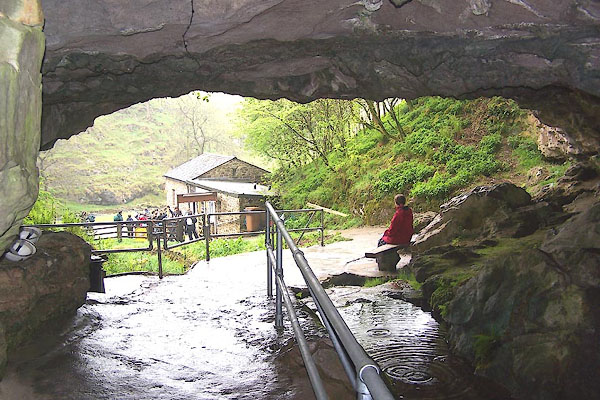
BMC92.jpg (taken 26.5.2006)
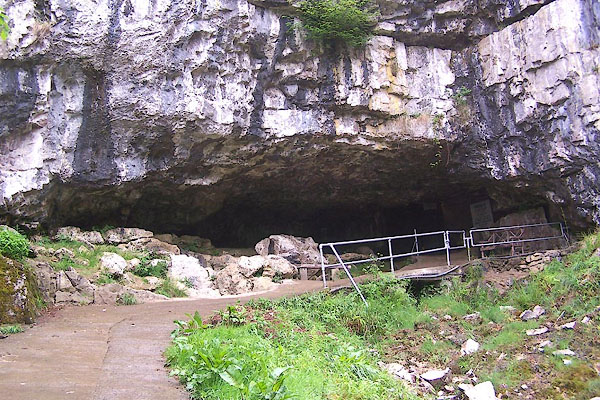
BMC91.jpg (taken 26.5.2006)
 goto source
goto sourceTour to the Caves in the West Riding of Yorkshire, late 18th century
Page 274:- "..."
"There are several other caves, all along from hence, on the south side of Ingleborough, above the village of Clapham, to Ingleton; but we postponed the pleasure of exploring these hidden recesses of nature till another summer. ..."
placename:- Ingleborough Cave
 goto source
goto sourcePage 205:- "..."
"CLAPHAM is a sweet village, about four miles south of Ingleton, on the Settle road. About a mile and a half from hence is a cavern, which, for magnitude and beauty, is second to none in the British dominions. It may be visited on application to Mr. J. Harrison, the guide, who resides near the church. The walk to it is delightful, the road leading through the pleasure grounds of Ingleborough, the residence of J. W. Farrer, Esq., Master in Chancery. The path lies for a short distance on the margin of a small artificial lake, and then turning to the left, enters a deep valley surrounded by lofty, precipitous hills, abounding in tremendous scars."
"At length you arrive at 'INGLEBOROUGH CAVE.' The entrance is at the base of an immense precipice of limestone, and forms a wide low arch, which gradually"
 goto source
goto sourcePage 206:- "narrows for about six yards, where there is an iron grating and a gate, kept constantly locked, save for the ingress and egress of visitors. To describe the interior of this cave is impossible - no language can convey an idea of its beauties - and the journey through it is so free from danger, that little children may go to the end of it with impunity. For the first 200 yards, the roof gradually lowers, from about fifteen to five feet. The surface is groined and crossed like elaborate gothic work, but the petrifactions are mostly of a dusky hue, though of every variety of form and size. This portion is called the 'Old Cave.' It was only in 1837 or 1838 that access was gained to the 'New Cave,' by letting off the water. Now, however, it is a stupendous cavern, said to be a 1000 yards in length, forming a succession of chambers, lobbies, &c., adorned with stalactites and stalagmites of infinite variety, single and grouped. A small stream of water flows through it, which tends to keep the air in agitation, and a path has been raised the whole way, so that visitors may walk through perfectly dry. The utmost care is very properly taken to prevent visitors from injuring the petrifactions, which have been and are forming the most beautiful natural curiosity that can possibly be conceived. ..."
placename:- Clapham Cave
placename:- Ingleborough Cave
placename:- Giant's Hall
placename:- Gothic Arch
item:- stalactite
 goto source
goto sourcepage 49:- "... A capital little stream for trouting with the fly during a summer freshet is the one called Fell Beck, which is here [Gaping Gill Hole] engulfed in the gaping jaws of this stupendous abysmal orifice, to appear, it is supposed, close to the mouth of Clapham Cave, with which, no doubt, it has direct connection; indeed, it is affirmed that such is the case."
 goto source
goto sourcepage 55:- "..."
"Clapham Cave."
"Clapham, or, as it is sometimes called, Ingleborough Cave, has its entrance some distance up a little glen leading"
 goto source
goto sourcepage 56:- "from Clapham to the mountain. The key is kept at the village. The charge for admission for less than three persons is 2s. 6d.; for three or more, one shilling a head. The mouth of the cave is in a lofty rock, sixty-one feet in height, whilst mossy trees and creeping parasites add charms to the scene without, ere an entry be made to view a widely different class of natural beauty, the result of slow chemical and physical changes within the womb of the earth. In olden times access had been gained to the extent of about sixty yards within the cavern, but the late Mr. J. Farrer made various explorations, diverting the water, and opening out the passages in certain places, so as to render the cavern accessible for about one thousand yards; it is even said that exploration was made further than the point which is called the Giant's Hall. The first so-called Gothic arch is about two hundred yards from the mouth of the cave. In the centre of one chamber, the Pillar Hall, is a solid column of spar, or stalactitic matter, from roof to floor, six inches thick; there are also stalactites and stalagmites still at work forming new, but as yet incomplete, columns, having interspaces between. There are at different places vertical rows of fluted stalactitic plates, called organs, by striking the edges of which in rapid succession musical notes are formed. There are the jockey's huge cap, flitch of bacon, elephant's head, bridescake, bed and cushion, fortification; slender coral-like incrustations, or tufted processes like leafless shrubs, inverted, or groups of lustres. The path is good, being raised above the water in some places; the old line at which the latter once stood being marked by a band or free edge of white concretion. Once or twice a low bridge has to be traversed; here and there the roof is depressed, and in one case the act of progression entails an uncomfortable degree of stooping. After all the rest, the Giant's Hall is reached, and in this is the small orifice which is said to lead to Gaping Gill Hole."
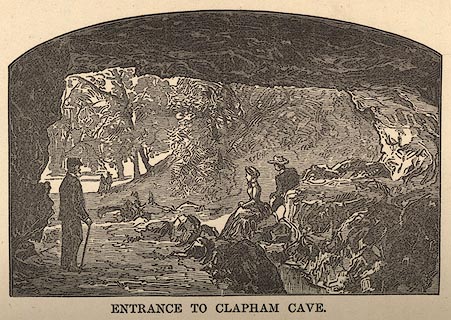 click to enlarge
click to enlargeBLD1E5.jpg
 goto source
goto source goto source
goto sourcepage 59:- "This beautiful cave is one which can be seen, even by ladies, with pleasure, the passages being so free from water."
item:- private collection : 27.6
Image © see bottom of page
placename:- Clapham Cave
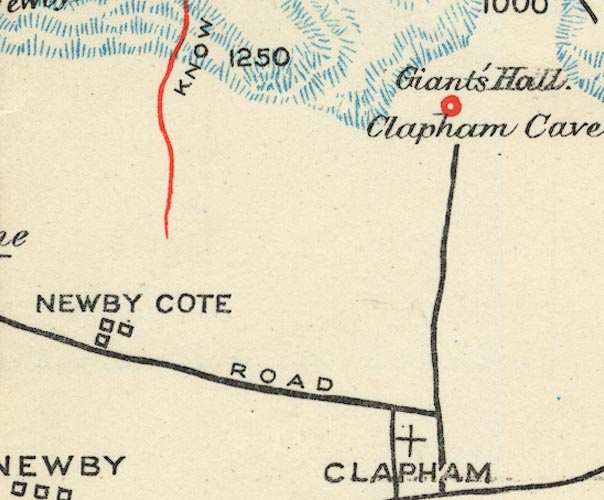
BS1SD77K.jpg
"Clapham Cave"
item:- private collection : 27.1
Image © see bottom of page
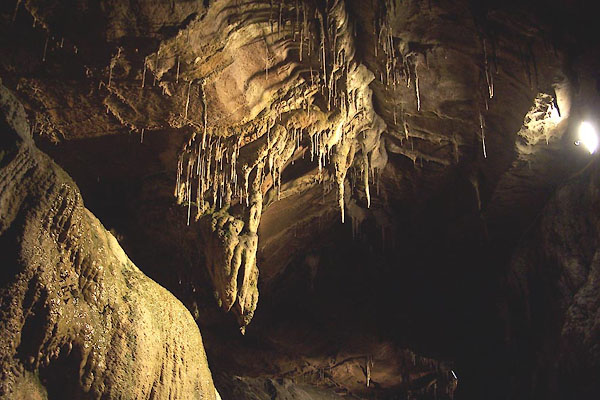
BMC93.jpg (taken 26.5.2006)

BMC94.jpg (taken 26.5.2006)
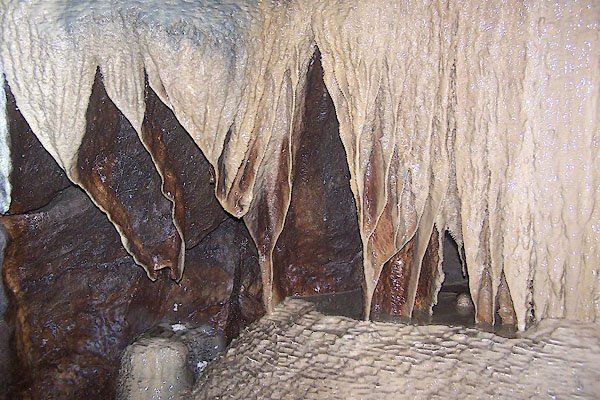
BMC95.jpg (taken 26.5.2006)
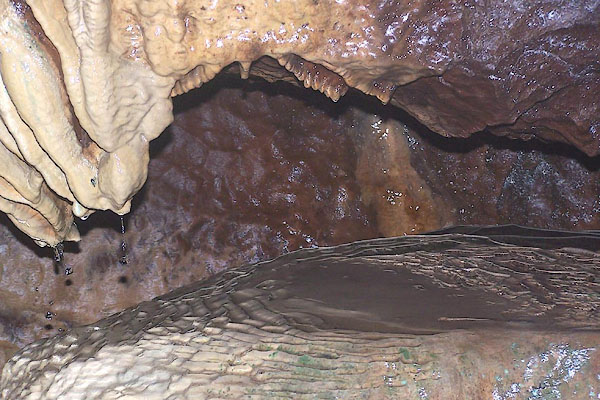
BMC96.jpg (taken 26.5.2006)

BMC97.jpg (taken 26.5.2006)
